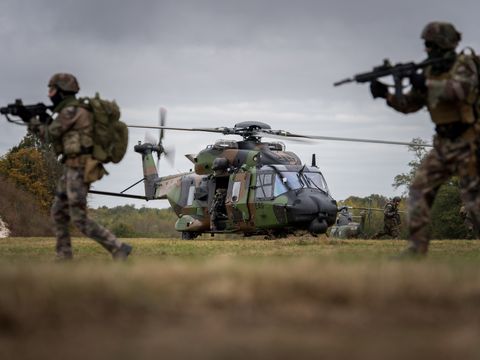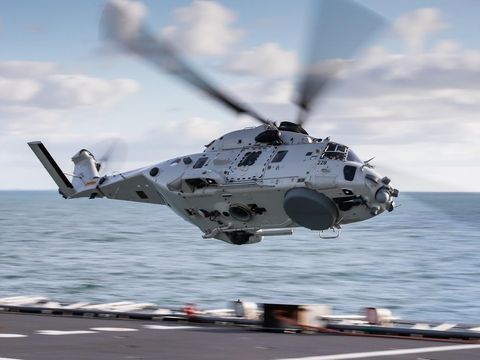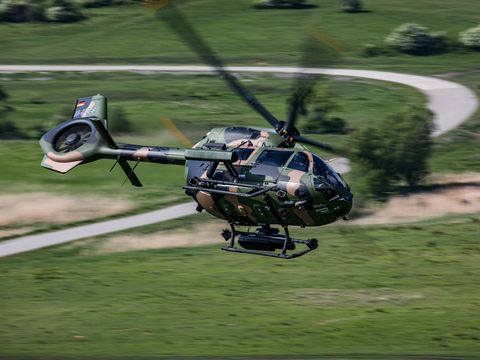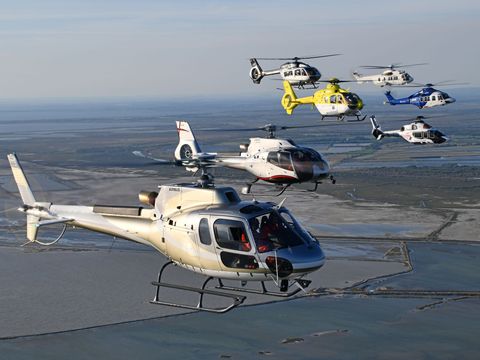Introduction
Developed by the NHIndustries consortium that brings together Airbus Helicopters, Leonardo Helicopters, and Fokker Aerostructures, the NH90 is a versatile and modern transport system rotorcraft offering unrivalled military capabilities.

NATO frigate helicopter (NFH)
The NH90’s NFH version is a ship-based maritime helicopter – one of the primary maritime weapon systems for any surface fleet. Operating from shore or warships in all flyable conditions, the helicopter is tailored for full capability in both anti-submarine (ASW) and anti-surface (ASuW) warfare. Search and rescue operations can be performed in either of these configurations.
Complementary roles at which NFH is extremely effective include maritime surveillance and control, airborne warning control, logistic transport and utility support, vertical replenishment (VERTREP), casualty evacuation (CASEVAC) and special operations (SpecOps/SOF) – including counter terrorism and anti-piracy.
The NH90 can be configured with anti-ship missiles, torpedoes, and sonobuoys. It can be equipped simultaneously with both an anti-ship missile and a torpedo, as well as small and medium-calibre lateral door machine guns for maritime security missions.
Advanced navigation and ship landing aids enable the helicopter to perform safe landings in day/night and adverse weather conditions, supplemented by a deck lock device for securing the touchdown in high sea states.
The fully automatic folding of the blades and the tail enables easier, faster and safer operations on board of ships.
The NFH has fulfilled missions along the east coast of Africa, in the Persian Gulf, the Indian Ocean, the Caribbean, Mediterranean and northern waters. Its operational versatility and wide range of capabilities make it the most effective naval helicopter available today. It is a true force multiplier and an essential asset for any operation.
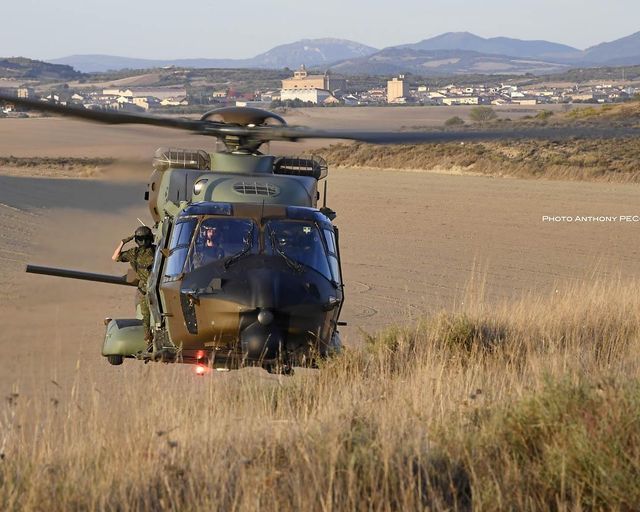
Tactical transport helicopter (TTH)
Combat-proven since 2010, the NH90 TTH version has been successfully deployed for operations in Afghanistan, Mali, Iraq, and Gabon. Disaster relief missions have been carried out in the Philippines, Vanuatu, Timor, Fiji, the Caribbean, Italy and New Zealand.
This version’s wide modular cabin, large sliding doors on each side and rear ramp give it superb accessibility, while the NH90 TTH also can be rapidly re-configured between missions – including troop transport with a 20-seat configuration, light vehicle transport, casualty evacuation (CASEVAC) with 12 stretchers, cargo airlift with standard NATO pallets, armed tactical transport, as well as special operations (SpecOps/SOF) and combat SAR. In addition, it is used in roles supporting civil missions such as disaster relief, medical evacuation (MEDEVAC), counter terrorism, VIP transport and many more.
Designed to operate independently, the TTH version is able to self-ferry to an operational theatre, as achieved from France to Mali, and then operate from a forward base in a harsh combat environment without a heavy support infrastructure for extended periods.
The aircraft is outstandingly agile to deal with the most testing operational conditions. It is equipped with a state-of-the-art mission system and there is an extensive list of role-tailored equipment options for the TTH to give an unrivalled level of versatile capability.
The latest on the NH90
In the spotlight
-
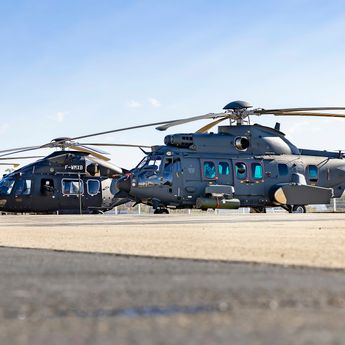 Stories Helicopters
Stories HelicoptersToday’s discussions: tomorrow’s revolutions
With the start of the International Military Helicopter conference, William Samson, VP, Head of Market Operations, reflects on the future of military helicopters, a theme he also discussed at Airbus… -
 Press releases Helicopters
Press releases HelicoptersAirbus delivers first Standard 3 configured NH90 to Spain
-
 Stories Helicopters
Stories HelicoptersAirbus helicopter rendezvous in the land of the long white cloud
-
 Stories Defence
Stories DefenceBehind the scenes with flight display pilots: “Awesome, cool, gigantic.”
-
 Press releases Helicopters
Press releases HelicoptersAirbus to lead NATO Next Generation Rotorcraft Capability concept study

